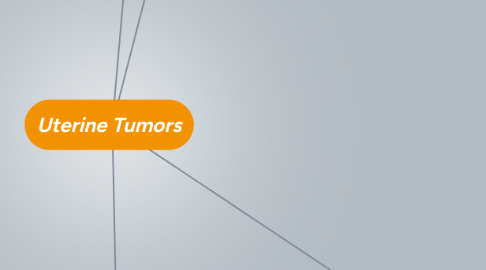
1. Endometrial AdenoCarcinoma
1.1. Epidemology:
1.1.1. Most common invasive tumor of thr female genital tract in US
1.1.2. Worldwide it's the 5th commonest cancer in women.
1.2. Risk factors:
1.2.1. Obesity (especially upper body fat)
1.2.2. Estrogen therapy
1.2.3. Nulliparity
1.2.4. Chronic anOvulation
1.2.5. Late menopause
1.2.5.1. bcoz the time of exposure to estrogen is longer the women with early menopause
1.2.6. Hypertension
1.2.7. Diabetes
1.2.8. Tamoxifen therapy
1.2.8.1. Tamoxifen is Esterogen receptor agonist in the endometrium (but esterogen antagonist in the breast)
1.2.9. High sicioeconomic status
1.2.10. may follow atypical hyperplasia !
1.2.10.1. But may occcur independently of it especially in older patients.
1.3. Clinical presentation:
1.3.1. Most patient are between 50 & 59 year
1.3.2. Marked leukorrhea and abnormal vaginal bleeding
1.3.3. tumor may grow diffuse or polypoid
1.3.4. often involves multiple areas of endometrium
1.4. Morphology:
1.4.1. may
1.4.1.1. resmble normal endometrium
1.4.1.2. exophytic
1.4.1.3. infiltrative
1.4.1.4. polypoid
1.5. Types:
1.5.1. The most common type is
1.5.1.1. Endometrioid Adenocarcinoma
1.5.2. Clear cell
1.5.3. Adeno-squamous
1.5.3.1. both Glandular and squamous component appear malignant
1.5.4. Adeno-canthoma
1.5.4.1. the squamous component is benign
1.5.5. Papillary serous carcinoma
1.6. Prosnosis:
1.6.1. Endometrioid carcinoma has a better prognosis than the other histological types, which tend to occur at a higher stage.
1.6.1.1. bcoz of the mercy of Allah the most common type (Endometrioid carcinoma) has Good prognosis !!
1.6.2. more detalis about prognosis from slide 37
2. Endomertial Hyperplasia
2.1. Definition:
2.1.1. Proliferation of endometrial glands.
2.2. Features:
2.2.1. Glands are irregular size and shape.
2.2.2. increase in gland/stroma ratio compared to proliferative endometrium
2.2.3. induced by persistent prolonged estrogenic stimulation of the endometrium.
2.2.3.1. same as leiomyoma
2.2.4. May progress to endometrial Carcinoma.
2.2.4.1. The development of cancer is based on the level and duration of the Estrogen excess.
2.2.4.2. The risk depends on the severity of the hyperplastic changes and associated cellular atypia.
2.3. Causes:
2.3.1. Common cause is a succession of anovulatory cycles (Failure of ovulation).
2.3.2. Maybe caused by excessive endogenously produced estrogen in:
2.3.2.1. Polycyctic ovary syndrome (inluding Stein-Leventhal syndrome)
2.3.2.2. Granulosa cell tumors of the ovary
2.3.2.3. Excessive ovarian Cortical function (cortical stromal hyperplasia).
2.3.3. Prolonged exogenous administration of estrogenic steroids without counter balancing progestins.
2.4. Risk factors:
2.4.1. Obesity
2.4.2. Western diet
2.4.3. Nulliparity
2.4.4. Diabetes Mellitus
2.4.5. Hypertension
2.4.6. Hyper-Estrinism
2.5. Clinical:
2.5.1. Milder forms occur in younger patients.
2.5.1.1. The great majority of mild hyperplasia regress, either spontaneously or after treatment.
2.5.2. More severe forms occur predominantly in peri & post menopausal women.
2.5.2.1. this form has singnificant pre-malignant potential.
2.5.3. patients usually present with abnormal uterine bleeding.
2.6. Histology
2.6.1. proliferation of both glands and stroma
2.6.1.1. BUT Glandular OverCrowding occurs
2.6.2. Classified according to
2.6.2.1. Architecture:
2.6.2.1.1. Simple or complex (Depeding on the degree of glandular complexity and crowding)
2.6.2.2. Cytologic features:
2.6.2.2.1. with or without atypia
2.6.3. Simple endometrial hyperplaisa:
2.6.3.1. Swiss cheese appearence
2.6.4. Complex endometrial hyperplasia:
2.6.4.1. papillary infoldings and irregular shapes glands
2.7. Clinical Behavior:
2.7.1. Pt. with atypia are more likely to develop carcinoma than those without atypia
2.7.1.1. The risk of developing Adenocarcinoma according to morphology:
2.7.1.1.1. Complex atypical = 30%
2.7.1.1.2. Simple atypica = 10%
2.7.1.1.3. Complex = 3%
2.7.1.1.4. simple = 1%
2.7.2. Atypical hyperplastic women in POST-menopausal women appears to have a higher rate of progression to adenocarcinoma.
3. LeioMyoma (Fibroid)
3.1. Definition:
3.1.1. Benign tumor of smooth muscle origin
3.2. Features:
3.2.1. THE MOST COMMON neoplasm of female genital tract "& probably the most common neoplasm in women"
3.2.1.1. more common in women of African lineage
3.2.2. Mostly it's multiple.
3.2.3. The tumor is estrogen responsive
3.2.3.1. therefore it's often increase in size during pregnancy and decrease in size during menopause.
3.3. Clinical presentation:
3.3.1. irregualr bleeding
3.3.1.1. New Node
3.3.2. pelvic pain
3.3.3. pelvic mass
3.3.4. infertility
3.4. Position of the tumor:
3.4.1. may be located anywhere in the myometrium
3.4.1.1. Sub-mucosal
3.4.1.2. intramural
3.4.1.2.1. THE MOST COMMON
3.4.1.3. Sub-serosal
3.4.2. Parastic Leiomyoma:
3.4.2.1. Pedunculated leiomyoma which lost its connection to the uterus and become attached to another pelvic organ.
3.5. Gross & Histology
3.5.1. Gross
3.5.1.1. Well circumscribed
3.5.1.2. Spherical
3.5.1.3. Dense and firm to hard masses
3.5.1.4. Whorled
3.5.1.5. Tan-white cut surface
3.6. Degenerative Changes:
3.6.1. Atrophy
3.6.1.1. after menopause or after pregnancy following DROP IN ESTEOGEN LEVEL
3.6.2. Hyaline changes (Hyalinization):
3.6.2.1. usually occur as the tumor ages
3.6.3. Myxoid and Cystic changes.
3.6.4. Calcification
3.6.4.1. common in menopausal women
3.6.5. Septic wirh necrosis:
3.6.5.1. due to circulatory inadequacy
3.6.6. Red degeneration
3.6.6.1. most common in pregnancy
3.6.6.2. This usually accompanied by pain which may produce clinical picture of Acute abdomen
3.7. Clinical behavior
3.7.1. Benign tumor with no appreciable maligant potential (incidence of malignancy: 0.1-0.5%)
3.7.2. it may cause anemia from heavy bleeding.
3.7.3. it may cause urinary or bowel obstruction (subserosal or parasitic tumor).
3.7.4. in pregnant women it may cause spontanous abortion, precipitate labor, obstructed labor, post partum hemorrhage (due to interference with uterine contraction) and red degeneration.
4. Endometrial Polyp
4.1. definition:
4.1.1. Localized Benign overgrowth of endomertial tissue covered by epithelium.
4.2. Features:
4.2.1. Most common between 40 & 50 years.
4.2.2. The size is variable from 1 mm to a mass that fills the endometrial cavity!!!
4.2.3. May protrude through external os !
4.3. Clinical presentation:
4.3.1. May cause irregular bleeding
4.4. Histology:
4.4.1. Glands of variable size and shape.
4.4.2. Fibrotic stroma.
4.4.3. Thick-walled blood vessels.
4.5. Clinical Behavior:
4.5.1. Benign with no malignant potential BUT smoetimes maligant tumors may found in them.

